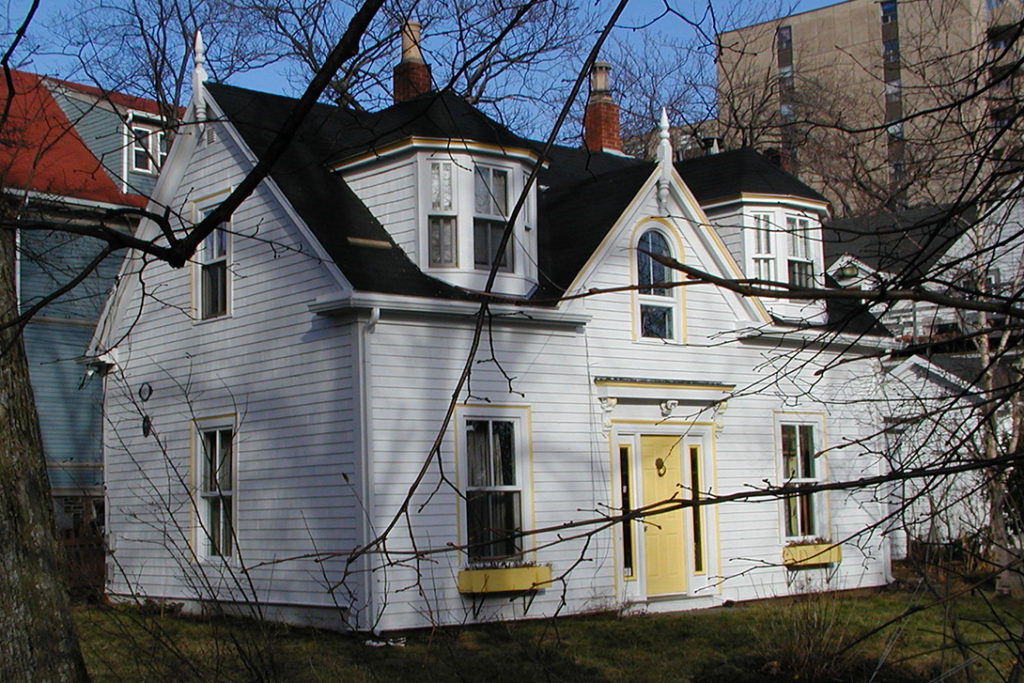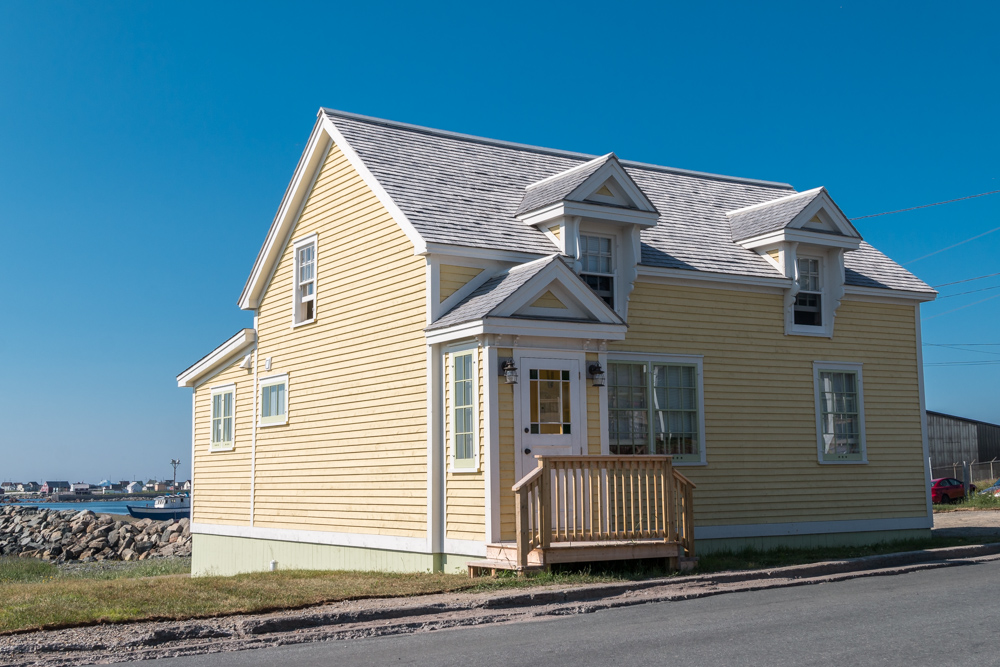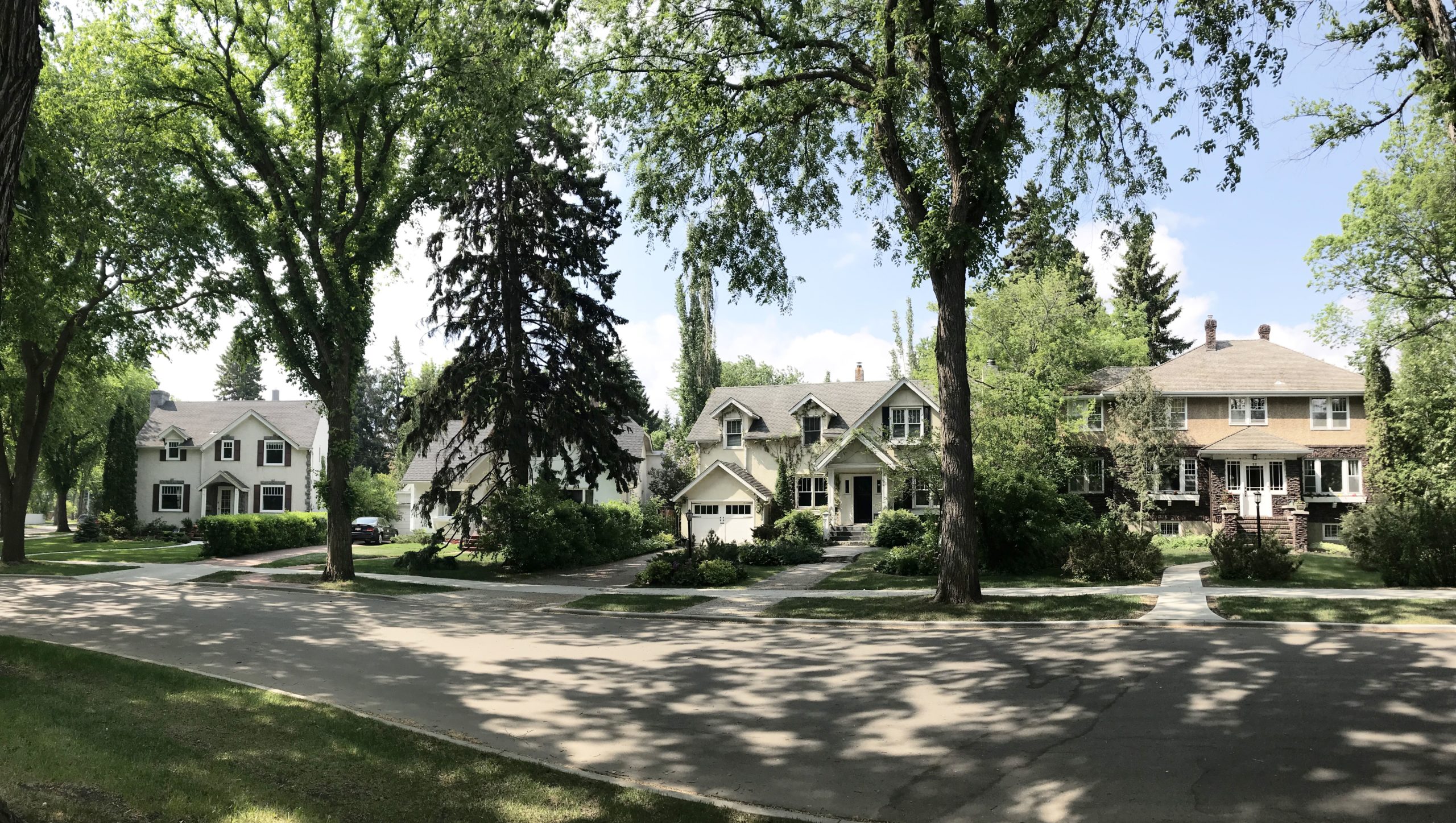Protecting the Character of Traditional Neighbourhoods
Many of Canada’s traditional heritage neighbourhoods are facing pressure to increase density and accommodate a greater mix of housing options and residents, including affordable housing.
Other communities are seeking ways to attract new residents and investment while protecting against gentrification. Here are three examples that offer inspiration:
Balancing Heritage Conservation with ‘Gentle Density’
To make this density increase possible, Edmonton City Council approved the addition of ‘secondary suites’ (new residential units within existing homes), ‘garage suites’, and ‘garden suites’ (new detached buildings) integrated in established neighbourhoods. City Council also approved subdivisions made up of standard 50’ wide lots to be subdivided into two 25’ lots city-wide.
“Ten years on, the plan’s infill goals have been achieved, if not exceeded,” says Darbi Kinnee, Government Relations Manager with the Canadian Home Builders’ Association — Edmonton Region.
Yet these ‘gentle density’ increases have been a longstanding concern for homeowners in Edmonton’s Westmount Architectural Heritage Area (WAHA). It is an established neighbourhood west of the downtown area with many 1910-1920s vintage homes.
“Westmount was one of our first streetcar suburbs,” says City of Edmonton Planner Scott Ashe. “Unlike most other neighbourhoods that evolved very slowly, Westmount was developed in a very short period of time. This has given its streetscapes a very consistent and harmonious architectural character.”
“People started to invest in these old historic homes a few decades ago,” he added. “By the 1990s these residents lobbied the city to institute the WAHA, which we did. Unfortunately, the WAHA’s rules offered very little control in terms of keeping new development in line with the neighbourhood’s traditional look. It was more honorary in nature.”
The weakness of the WAHA’s heritage designation became an issue when the City of Edmonton’s infill policy began to be applied in earnest. To address these concerns while respecting the municipal development plan’s infill goals and the rights of developers, the City held an extensive consultive process with all stakeholders. The results of these consultations led to a widely-supported list of zoning changes for the WAHA, which Edmonton City Council approved in 2019.
“Everyone entered the process with the idea that it was a conversation and that achieving a solution required to compromise on everyone’s part,” said Ashe. “And that’s what they did. They came up with proposals that everyone could live with.”
The compromise: Under the WAHA’s revised zoning rules, all new construction and major renovations to the facades of heritage homes in this area must conform to the neighbourhood’s traditional character. At the same time, the revised zoning policy allows for the addition of secondary suites, garage suites, and garden suites. They just have to fit in, architecturally speaking.
The revised WAHA zoning rules were well received by heritage homeowners and property developers alike. “In fact, when we took the proposed zoning changes to council, both sides supported the changes publicly and no one spoke against them,” Ashe said.
The lesson learned from the WAHA zoning revisions is that heritage preservation can live side-by-side with gentle density increases and architecturally respectful infill projects, as long as everyone has a meaningful say in the rule-making process. The consultative approach is now being implemented in the historic Edmonton suburb of Glenora.
Creative compromise saves Halifax Cottage
Built in 1873, Halifax’s Dr. James Doull House at 1029 Tower Road is a Georgian-style wooden cottage topped by two front-facing five-sided Scottish dormers. It is a gem of a heritage home, and one whose fate was under threat due to the weakness of municipal heritage designation.

1029 Tower Road, in Halifax, NS.
“Municipal registration is only a limited protection in Nova Scotia,” said Andrew J. Murphy, President of the Heritage Trust of Nova Scotia (HTNS). “You can tear a heritage building down after giving three year’s notice to the city. That is what the current owner of 1029 Tower Road did in 2017: He gave them notice so that he could tear down the cottage to build higher density housing on the property.”
One reason why the Dr. James Doull House was vulnerable to demolition was the cottage’s unusual position on its lot. Once part of a larger land parcel that had since been subdivided for other houses, the cottage sat with its side rather than its front façade facing onto Tower Road. “It was there before the rest of the city grew up around it,” Murphy explained. “The cottage had been placed on the lot not facing the streets, but facing the sun.”
The Dr. James Doull House’s fate seemed sealed until the City of Halifax’s heritage staff came up with an innovative solution under its Heritage Advantage program. “As applied in this case and others, the logic behind the Heritage Advantage is to allow property owners to achieve higher density and other benefits if they preserve the buildings rather than demolish them,” said Murphy. “In this way we can preserve the traditional characteristics of heritage neighbourhoods while accommodating the need for higher density and affordable housing.”
Rather than just demolish the house and build on its land, the City and HTNS proposed relocating the cottage to face the street, and then allowing the property owner to build a new three-storey building that would include six to nine residential units. The cottage itself would be renovated to provide basement and second-floor residential units, plus a coffee shop on the ground floor. The cottage’s exterior will be restored to heritage standards, with a front lawn to complete the appropriate Victorian-era appearance. While moving heritage structures is typically considered a solution of last resort, in this case it was one part of a creative approach that led to a positive outcome: retaining a heritage building in its original neighbourhood.
Bonavista Living Preserves Homes and the Community
Newfoundland’s John Norman has been called the ‘Baron of Bonavista’, due to the many heritage buildings – 72 at last count! – that his companies Bonavista Living and Bonavista Creative own in this community. But although Norman and his business partner buy these Newfoundland heritage homes and commercial sites to renovate and then lease or sell, he is anything but a ‘neighbourhood gentrifier’. In fact, the Mayor of Bonavista, age 35, tries to sell these homes to new year-round residents when possible, as opposed to selling them to wealthy boomers looking for summer properties. Although Norman needs to make a living, he’s not in this for the money – and his conservation efforts illustrate how heritage preservation can go hand-in-hand with keeping communities socially viable and their housing economically accessible.
“I’ve seen too many seaside communities that have become ‘living museums’ due to heritage preservation efforts that have pushed up prices and attracted summer-only residents,” Norman told Locale. “My goal is not just to preserve the tremendous number of heritage homes that we have in Bonavista, but to preserve the economic health and social resilience of this community. Those goals determine who we sell to, and the ways in which we do our projects.”

Robert Ford Tavern in Bonavista, NL. (Photo: Bonavista Living)
Many of the heritage homes that can be viewed at www.bonavistaliving.com were long vacant and decaying before John Norman purchased them. Purchase prices reflected how serious the decay had become. Some cost as little “a few thousand dollars,” he said.
In turn, the amount of heritage preservation that Norman invests into a home also depends on its condition. “In some cases the inside as well as the outside is authentic, so it makes sense to restore both with historical accuracy as much as we can,” he said. “In other cases, the interiors of the homes have been gutted over the years leaving almost nothing to restore. These are the ones that we take up to more modern appearances, and often subdivide into units to provide more affordable housing. Still, we do our best to ensure that their exteriors are restored properly, both for their sake and to preserve the streetscape.”
John Norman’s efforts are not only preserving Bonavista’s built heritage, but they are also providing employment for skilled carpenters from around the province. As well, the wealth of historic artifacts often found in these buildings – from old newspapers to period bedframes to World War One bayonets hidden in the walls – are being displayed where possible to put their individual histories into context. Norman is currently compiling historical files for each of his properties, to help their new owners appreciate and understand where they came from.


